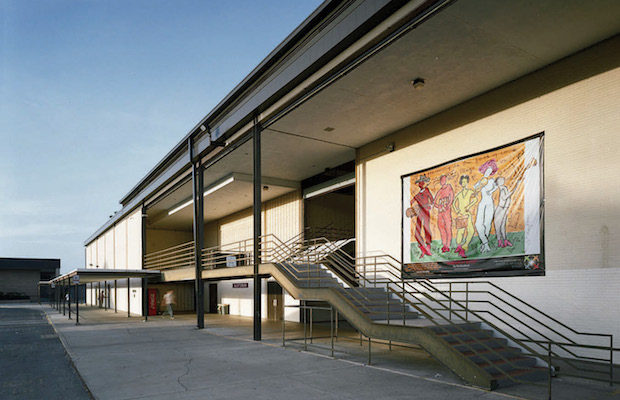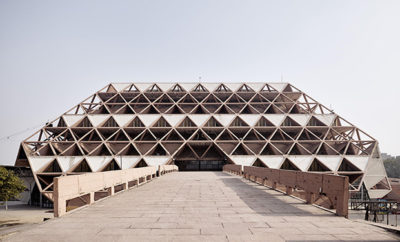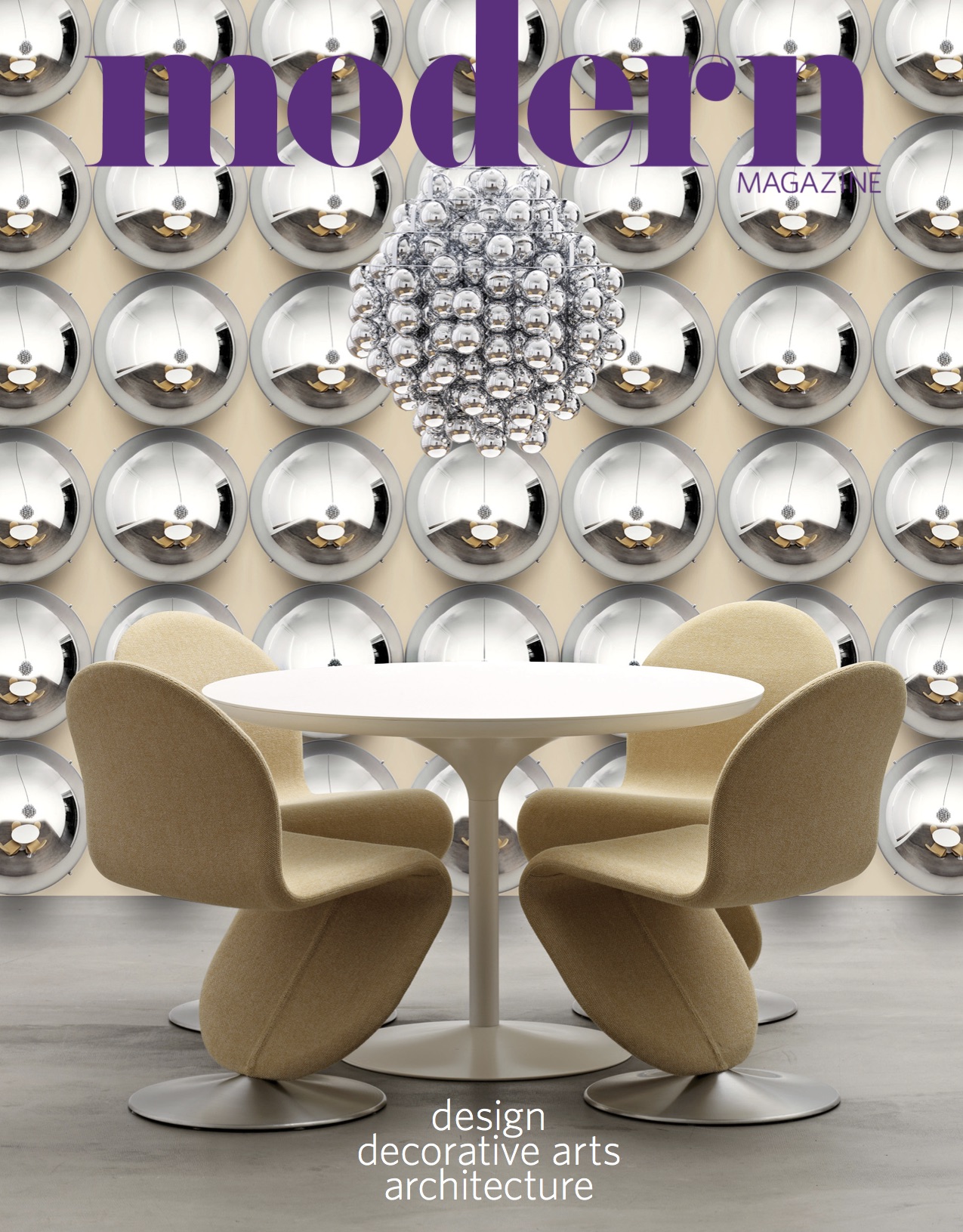 Riverview High School, Sarasota, Florida by Paul Rudolph, 1958. Demolished 2009. Andrew Moore Photo.
Riverview High School, Sarasota, Florida by Paul Rudolph, 1958. Demolished 2009. Andrew Moore Photo.
Architecture
Monumental Justice
WHILE LIVING IN POSTWAR ITALY, retired U. S. Army colonel James A. Gray became involved in the effort to stabilize the Leaning Tower of Pisa, submitting a plan that involved freezing the ground it stood on. The plan wasn’t accepted, but Gray was undeterred and went on to incorporate the International Fund for Monuments in New York in 1965, a not-for- profit organization that would funnel the resources of the private sector into preservation. Now called the World Monuments Fund, the organization has overseen more than six hundred preservation projects in ninety countries over the past half century, and has chapters in Great Britain, France, India, Italy, Peru, Portugal, and Spain. For most of its time, WMF has focused on art and architecture of the more distant past, but in the last two decades it has become clear that more recent history is also under urgent threat, namely modernism.
After launching the World Monuments Watch, a juried biennial listing of imperiled sites, in 1996, WMF’s leadership, Bonnie Burham and Harry Tze Ng, noticed that a high percentage of the nominations they were receiving were for modern buildings. “They started to realize that these buildings were tremendously threatened, in many ways more so than ancient sites,” says Lisa Ackerman, executive vice president. To address this, WMF launched the Modernism at Risk initiative in 2006, a project that would focus exclusively on modern architecture.
Two years later, WMF partnered with Knoll to create the World Monument Fund/Knoll Modernism Prize, which comprises a $10,000 honorarium and a limited-edition Barcelona chair, and is awarded every two years to a team working to preserve a modern building. The premise was simple, says Knoll communications director David Bright: “Drive a conversation that Modern buildings can be sustainable structures adapted to contemporary use and, in the process, raise public awareness about the preservation of this important cultural legacy.” Past prizes have gone to teams working to save Alvar Aalto’s Viipuri Library in Vyborg, Russia; Masatsune Matsumura’s Hizuchi Elementary School in Yawatahama City, Japan; Johannes Duiker and Bernard Bijvoet’s Zonnestraal Sanatorium in Hilversum, Netherlands; and Hannes Meyer and Hans Wittwer’s ADGB Trade Union School in Bernau, Germany. Last December the fifth prize was awarded to Molenaar & Co. architechten, Hebly Teunissen architechten, and Michael van Gessel Landscapes for the rehabilitation of the Justus van Effen housing complex in Rotterdam. The brick and concrete structure, designed by Michiel Brinkman and completed in 1922, is an important example of early modern social housing and had suffered from neglect and deleterious alterations and attempts at restoration since the seventies.
According to Frank Sanchis, Director of U. S. Programs at WMF and project manager for the Modernism Prize, part of the reason for modern architecture’s vulnerability today can be attributed to the fact that—despite the vogue for mid-century modern—many modern buildings are just not seen as attractive anymore. “One of the characteristics [of modern architecture] is that it eschews . . . ornament and decoration,” Sanchis says. But “lack of ornamentation makes it hard for people to like it.” Certain styles, such as much-maligned brutalism, are an especially hard sell, since what made them exciting in the first place is now mostly forgotten, what was once radically simple is now simply boring. “Many times [modern buildings] were very high-design concepts, and often the triumph was the manipulation of materials, and [the buildings] weren’t necessarily built to be eye-catching,” Ackerman says. “If you have to stand and explain the beauty to somebody it becomes a problem.”
The triumph that came from manipulating materials was often short-lived, Sanchis explains, with then-revolutionary—and therefore untested—concrete, steel, caulking, and other modern materials degrading faster than expected and complicating maintenance. Research and redesign are costly, and owners are often unwilling to foot the bill—even if it’s sometimes owners’ own alterations that created or exacerbated problems in the first place. Included on the Watch in 2008, Paul Rudolph’s Riverview High School in Sarasota, Florida, was given a rehabilitation price tag of approximately $20 million, a sum the school board refused to pay, even though supporters of preservation pointed out that the main problems with the building— flooding in the exterior hallways and mold buildup inside—resulted from improper changes made to the roof’s drainage systems and the installation of air conditioning. The school came down in 2009.
To Ackerman, the public’s hostility to modern architecture seems unfair. “Many of these buildings came out of a period of great exuberance and a lot of times these buildings were an expression of a kind of forward looking euphoria, and so [it’s ironic] that . . . now these buildings are being vilified as being ugly and unadaptable.”
All in all, of the nearly eight hundred sites that have appeared on the World Monuments Watch list, only four have been demolished or made unrecognizable by alterations—but all four were modern. “I think part of it is just getting people to understand that in the same way they can be really excited about a building from 1900, they can be just as excited about one from 1960,” Ackerman says. She’s hopeful about the future. “If out of eight hundred sites three have been demolished and one is sort of in limbo . . . you know those odds aren’t really so bad. Lots of advocacy—and a little bit of faith—have gone a long way for the World Monuments Fund.”
All images provided by World Monuments Fund.













